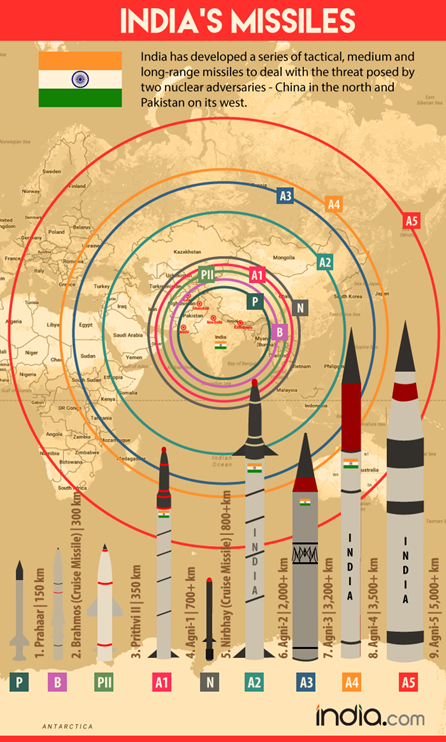

Context
India successfully carried out a "training launch" of the Agni-4 intermediate-range ballistic missile from the APJ Abdul Kalam Island in Odisha, marking a significant boost to the country's military capabilities.
About
Ballistic Missile:
- A ballistic missile is a missile that has a ballistic trajectory over most of its flight path, regardless of whether or not it is a weapon-delivery vehicle.
- Ballistic missiles are categorised according to their range, maximum distance measured along the surface of earth’s ellipsoid from the point of launch to the point of impact of the last element of their payload.
- The missile carries a huge payload. The carriage of a deadly warhead is justified by the distance the missile travels.
- Ballistic missiles can be launched from ships and land based facilities.
- For example, Prithvi I, Prithvi II, Agni I, Agni II and Dhanush ballistic missiles are currently operational in the Indian defence forces.
Advantages:
- The course taken by ballistic missiles has two significant desirable properties. First, ballistic missiles that fly above the atmosphere have a much longer range than would be possible for cruise missiles of the same size.
- Powered rocket flight through thousands of kilometers of air would require vastly greater amounts of fuel, making the launch vehicles larger and easier to detect and intercept.
- Ballistic missiles can travel extremely quickly along their flight path. An ICBM can strike a target within a 10,000 km range in about 30 to 35 minutes.
- With terminal speeds of over 5,000 m/s, ballistic missiles are much harder to intercept than cruise missiles, due to the much shorter time available.
- Therefore ballistic missiles are some of the most feared weapons available, despite the fact that cruise missiles are cheaper, more mobile, and more versatile.

|
Nuclear Triad:
No-first use policy India maintains the ‘Non-use of nuclear weapons against non-nuclear-weapon states’, the doctrine states that ‘in the event of a major attack against India, or Indian forces anywhere, by biological or chemical weapons, India will retain the option of retaliating with nuclear weapons.’ |



